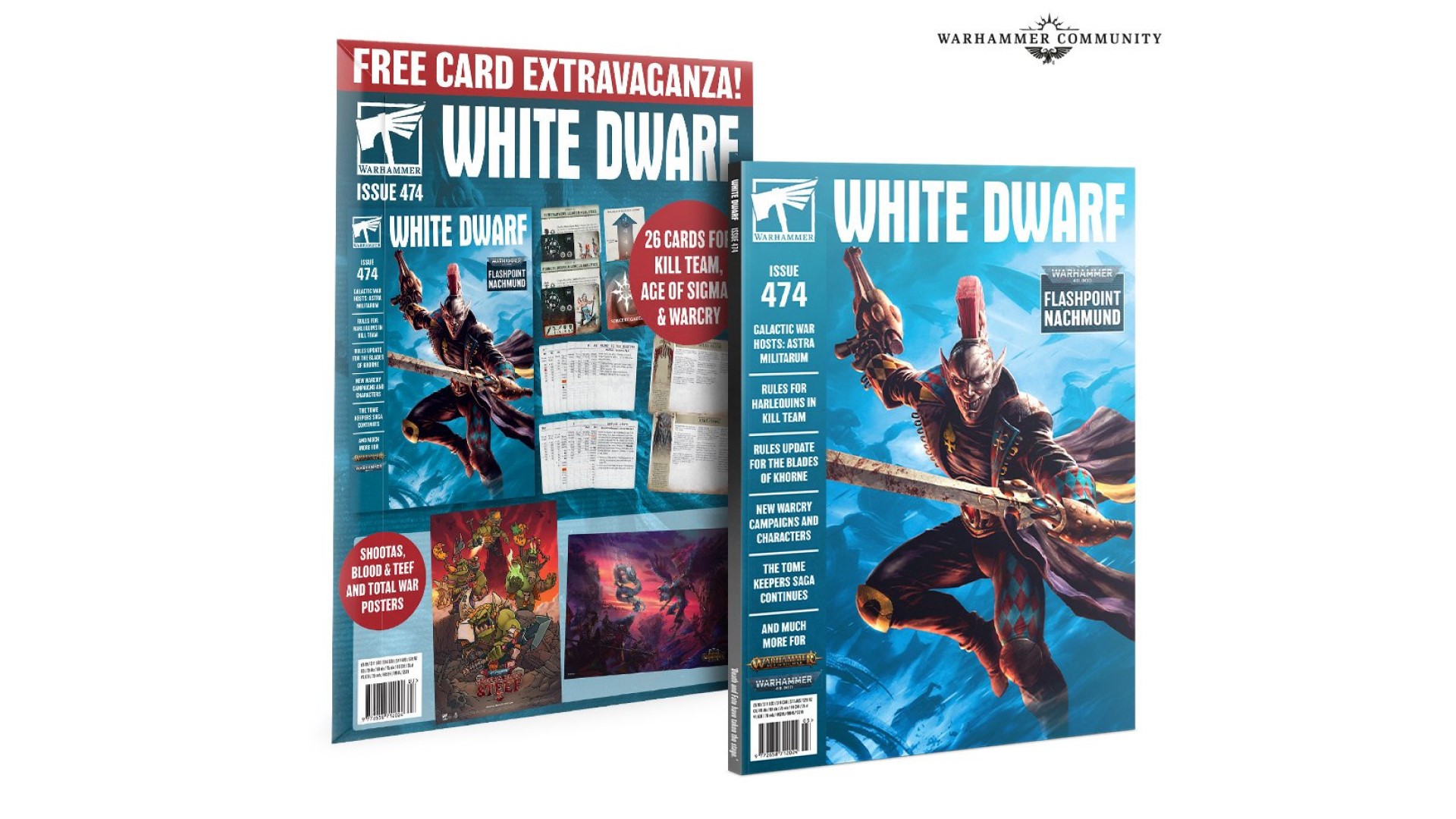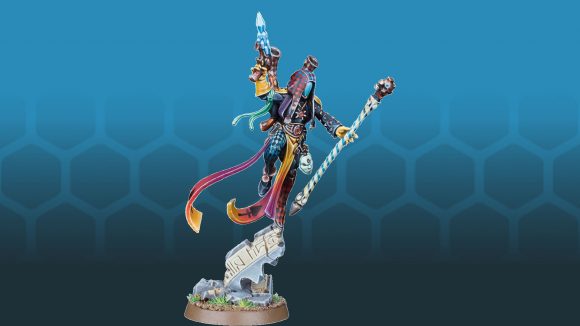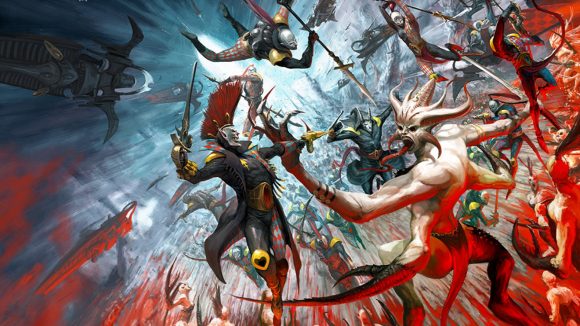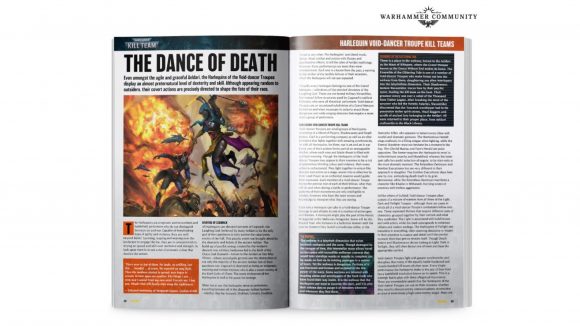Games Workshop grants Warhammer 40k’s Harlequins – a mysterious yet powerful sub-faction of the Aeldari – a chunky set of rules for its Kill Team skirmish game in this month’s issue of White Dwarf magazine.
Across 14 pages of Harlequins Kill Team rules and lore, published in White Dwarf Issue 474 this month, GW adds the ability to take a Death Jester and a Shadowseer in your ‘Void-dancer Troupe’ Kill Team (not possible under the Harlequins rules in the original Kill Team Compendium). The Harlequins also gain a unique faction ability called ‘Saedath’; three new Tac Ops; eight Ploys (four strategic and four tactical); three unique psychic powers; eight pieces of Equipment; and up-to-date unit datasheets for the Lead Player, Player, Shadowseer, and Death Jester Operators.
These new Harlequins rules are the latest in a series of Warhammer 40k Kill Team faction rules updates to be published via the magazine – following rules for the Genestealer Cults ‘Wyrmblade’ Kill Teams in January’s issue, and, before that, the Thousand Sons’ Warpcoven Kill Teams in October 2021’s Issue 470.
Besides rules content, the 14-page section also includes two pages of rolling tables with which to randomly generate elements of your Harlequins Kill Team’s backstory – including the team name, operator names, background, base of operations, and quirks.
There are also four pages of Battle Honours, Rare Equipment, Strategic Assets, Requisitions, and more, for Kill Team’s Spec Ops narrative play mode.
How Harlequins Kill Teams work
The ‘Saedath’ faction ability is a very narrative-heavy rule that plays on the Harlequins’ distinctive theme, as Aeldari actors, artists, and performers who treat each battle as a choreographed stage performance.
Saedath introduces five ‘Allegories’ (Comedy, Epic, Melodrama, Odyssey, and Tragedy), each of which carries an associated ‘Accolade’ (an in-game buff) and ‘Performance’ (a particular action to perform in-game).
At the beginning of the game, you’ll pick an Allegory to follow, and your one nominated ‘Pivotal Role’ Operative gets its Accolade buff during the game. Comedy reduces the AP cost of Fall Back by one, for example, while Melodrama allows you to re-roll one attack die when shooting.
Then, whenever one of your Operatives completes the Performance for the active Allegory for the first time, you get a point (or two, if it’s your Pivotal Role Operative doing it). Comedy’s Performance is simply to do a Fall Back action; Tragedy requires you to lose wounds to a shooting attack.
Hit four of these points overall, and your entire team gets the accolade for the rest of the game – plus one bonus CP on the spot, and two CP per turn, instead of the usual one, thereafter.
It’s a mechanic that means Harlequins Kill Teams will want to pick what ‘style’ of match to play, then commit to completing those Performances to get the maximum buffs for the game.
As for the other detailed rules, we can’t share everything – you’ll have to pick up the March issue of White Dwarf from Games Workshop for that.
 White Dwarf Issue 474 (March 2022) White Dwarf Issue 474 (March 2022) $11.99 Buy from GW
White Dwarf Issue 474 (March 2022) White Dwarf Issue 474 (March 2022) $11.99 Buy from GW
In the meantime, though, you can learn all about the various Aeldari tribes in our Warhammer 40k Eldar guide – or read about the Dark Kin in our guide to Warhammer 40k Drukhari. In fact, why not go the whole hog and learn about all Warhammer 40k xenos?
Source: Wargamer







